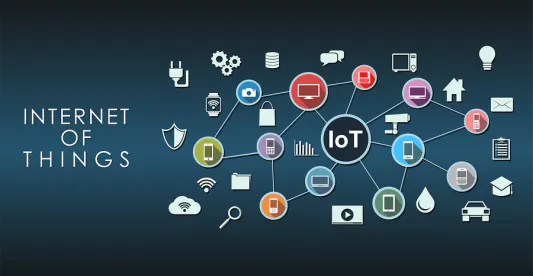The European Commission estimates that the global market for the Internet of Things (“IoT”) will grow to 75.4 billion devices by 2023. It also estimates that the economic value of spectrum enabled services is at present worth €500 billion per year. This is expected to increase by 200% – up to €1 trillion a year by 2023 – making the availability of spectrum (needed to send and receive data) and the development of 5G technology increasingly significant.
The European Electronic Communications Code, part of the Commission’s Digital Single Market (“DSM”) Strategy, is nearing the end of the legislative process. It contains a range of safeguards aimed at European-level harmonization for 5G and spectrum management, high-speed broadband technology, and seeks to level the regulatory playing field for “Over the Top” (“OTT”) services with that of traditional telecoms services.
Background
The EU’s current regulatory framework on telecommunications consists of four directives adopted in 2002, and last revised in 2009. Since then, technology has significantly evolved and markets have changed considerably, including through the introduction of increasingly popular OTT services. These are known as “over-the-top” since they bypass traditional telecommunications or broadcast operators to deliver similar services, commonly through apps. They include voice over IP calls, internet-based messaging on smartphones and other internet-connected devices, or internet streaming services.
The scattered regulatory framework resulted in varying application of the legislation by national level bodies, and consequent fragmentation and regulatory uncertainty in the sector. A by-product of that fragmentation was a delay in the rollout of 4G technology across the EU – it took the EU an additional 3 years to match the deployment of the technology in the U.S. Looking forward however, the EU is determined to avoid repeating the same mistakes for the rollout of 5G. The Commission has therefore explicitly recognized that, in order to avoid falling behind other countries, the rollout of 5G should strictly not be an exclusively domestic matter for EU Member States, and instead needs EU-level regulation.
The European Electronic Communications Code
To this end, in September 2016, as part of its DSM Strategy, the European Commission proposed a Directive establishing the European Electronic Communications Code (“the Code”) and a Regulation which enhances the role of the Body of European Regulators for Electronic Communications (“BEREC”).
The Code, intended to modernize and harmonize the rules on telecommunications and to make the regulatory framework more effective, focuses on a number of key areas: 5G, spectrum and spectrum management; high-speed broadband technology; and bringing new OTT services within the ambit of the Code.
- Spectrum
The Code introduces new rules on spectrum management: while previously managed at national level, the Code introduces a framework for facilitating spectrum assignment in the EU. This aims to bring about the simultaneous release of spectrum frequencies throughout the EU’s single market, on the same technical conditions, and thereby attract simultaneous investments in 5G networks across the bloc. The Code seeks to incentivize and increase investment in spectrum – in part based on longer license durations (of 20 years) – and to provide clarity on license renewals. This all has the goal of ensuring the rapid deployment of 5G technology across the EU from 2020.
- High-speed broadband technology
The Code also promotes increased access to high-speed broadband networks (both fixed broadband and mobile broadband) by incentivizing investments. It aims to encourage telecoms operators with significant market power to invest in high-capacity broadband networks. In return, such telecoms operators will benefit from reduced price and access regulation. It is envisaged that European businesses will thrive with widespread access to high-speed broadband connections, in turn fostering innovation.
- OTT Services regulated as electronic communications services
The Code also amended the definition of “electronic communications services” to include:
- internet access services;
- interpersonal communications services, further split into two subcategories (number-based and number-independent);
- services consisting wholly or mainly of the conveyance of signals, such as transmission services that are used for broadcasting.
Through these provisions, the European Commission integrated OTT services into the larger regulatory framework. In doing so, the Commission intended to “level the playing field” between traditional telecoms and popular OTT services – and consequently the Code will apply to both. However, only telephone number-based services will be regulated like traditional telecoms operators, meaning that they will be bound by the same obligations, including providing access to emergency services. Telephone number-independent services will have no such obligations.
Recent developments in the legislative process
In the early hours of June 6, 2018, EU negotiators reached a political agreement on the Code during “trilogue” negotiations. One of the outstanding points of the telecoms reform concerned a cap on intra-EU international calls. Negotiators finally agreed to prohibit high costs of calls to other EU Member States, setting a maximum cost of 19 cents per minute for intra-EU international calls, and 6 cents per SMS, applicable from Spring 2019.
The provisional agreement reached during the trilogue negotiations was an informal one – it then had to be approved through formal procedures in both the Council and the European Parliament.
In the Council, on June 29, 2018, the Committee of Permanent Representatives of the Council of the European Union (“Coreper”) provisionally approved the final compromise texts of both the Directive establishing the European Electronic Communications Code and the BEREC Regulation. This must now be formally adopted by national Ministers.
In the European Parliament, the Committee on Industry, Research and Energy (the leading Committee on the legislation) confirmed the two provisional agreements on July 10, 2018. This must now be confirmed by the plenary session of the European Parliament, which is expected to vote on the final text in Autumn 2018.
Once it is formally adopted by both the European Parliament and the Council, EU Member States will be required to transpose the Directive on the Electronic Communications Code into domestic law within two years.




 />i
/>i
